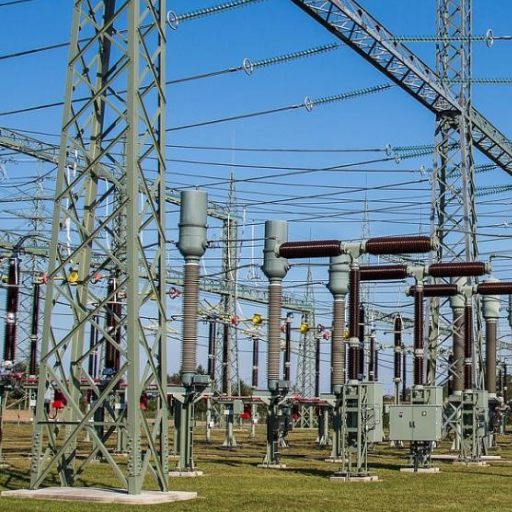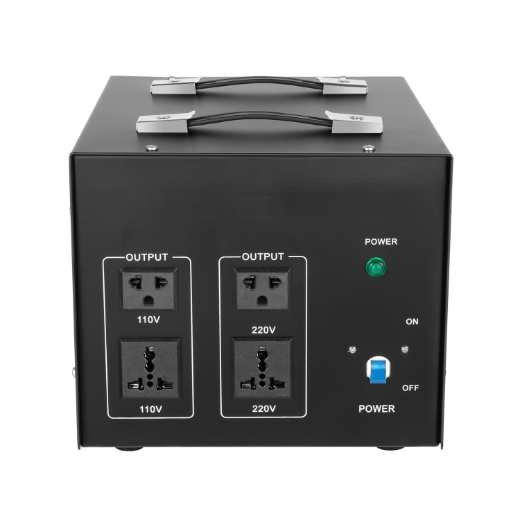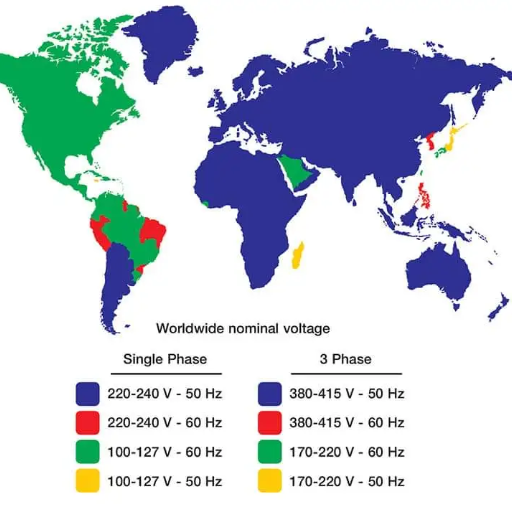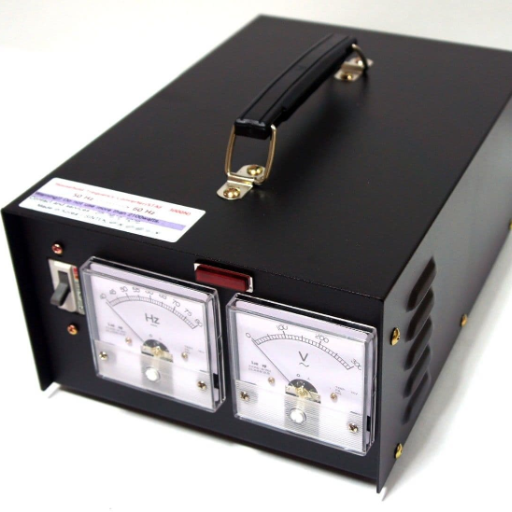Whether it involves power generation or distribution, the regional distinction in frequencies is one of the major ones: 50Hz and 60Hz. Those figures may initially seem like purely technical details, but they actually have a far-reaching effect on how different electrical systems worldwide are built, run, and utilized. From an engineer or company owner to a layman, learning about the differences in these frequencies provides a glimpse into the hidden worlds of power and the variations in standards. The upcoming paragraphs explore the realm of frequency science, the main causes of the global disconnect, and the exposed rough-on-air everyday electronics and industries. At the end of the reading, you are knowledgeable and competent about the role of frequency in shaping the energy landscape in different parts of the world.
Brief Introduction to Frequency Systems

The frequency domain represents the number of times the alternating current (AC) radio oscillates per second, generally measured in Hertz. The global method, primarily 50 Hz and 60 Hz, resulted from regional decisions in the early 20th century, and both have become absolute values. Most countries in Europe, Asia, and Africa use 50 Hz, whereas North America and part of South America have established 60 Hz as a standard. The decision regarding the frequency to be employed involves designing the electrical infrastructure and ensuring device compatibility. Becoming familiar with the systems is essential for easy power transfers and ensures that the devices will be usable in the regions where they are purchased.
What is Frequency?
The frequency of a repeating event is the primary measure of its occurrence; it is expressed in hertz (Hz), which is one cycle per second. It has a big purpose in science, engineering, and daily life. As an example, frequency in electrical systems decides the time of the AC reversal in a network. Fundamental frequencies like 50 Hz or 60 Hz enable the synchronization of equipment and effective energy distribution in the grid. The significance of frequency in other applications cannot be underestimated. In telecommunication, it is represented in the frequency of radio signal oscillation rate, while in acoustics, it simply changes the sound quality. Consequently, the global upturn in technological fields is accompanied by the spread of frequency not only in technology but also in various aspects of innovative engineering and scientific research worldwide.
Importance of Frequency in Electrical Systems
One of the crucial things to maintaining the stability and efficiency of power systems is keeping the frequency constant throughout the whole system. The most used global standards are 50 or 60 Hz frequencies, as they are pretty reliant on the synchrony of generation and consumption. Deviating from the said frequencies may not only result in equipment failures but also prolong power blackouts or even cause wide-scale physical harm in the end. Cutting-edge tools that work in conjunction with the intelligence of the grid and real-time monitoring systems are among the measures currently in place to detect and adjust frequencies in real-time when there are fluctuations. At the same time, the field of renewable energy is increasingly populated with examples like wind and solar energy, which tend to be generated sporadically, posing new and unique challenges for frequency regulation. Consequently, the importance of implementing strong grid management strategies to keep the system balanced and reliable overall is outlined here.
Overview of 50hz and 60hz Standards
The 50Hz and 60Hz power line frequency standards are the two central electrical grid frequency systems. In Europe, Asia, Africa, and some parts of South America, the 50Hz standard is more prevalent, while the 60Hz standard is usually found in North America and in a few other areas, such as Japan. The standards were set in the past mainly due to early engineering choices, and the differences in infrastructure and equipment compatibility have, over the years, maintained their current state.
The decision to use the 50Hz or, well, the 60Hz system is critical and affects the electrical grid concerning the various factors outlined below. Thus, if a frequency higher than the other is used, it could reduce the size and weight of transformers and generators, which is advantageous for some industries. However, the 50Hz system is known to have lower losses on long-distance transmission; these losses sometimes make the 60Hz system less desirable for areas with a large number of transmission lines. Furthermore, the discrepancy of these parameters is a factor in the production of consumer goods, industrial tools, and even the time clock of electrical systems in a global context.
One way to optimize 50Hz and 60Hz regions for compatibility is through the application of frequency converters and enhancing the grid with advanced technologies that will enable efficient interconnection. At the same time, as the usage of renewable energy is steadily increasing, the knowledge and management of these two standards are still the key to the success of a stable and efficient power delivery worldwide.
Comparison of 50hz and 60hz Power

Frequency and Speed
The most significant dissimilarity between 50Hz and 60Hz power is the frequency at which the alternating current moves. In 50Hz systems, the current shifts direction 50 times per second, whereas in 60Hz systems, it changes 60 times per second. This frequency acutely affects the speed of rotation of motors and other equipment.
Efficiency and Energy Loss
In almost all cases, 60Hz systems show slightly more energy loss than 50Hz systems due to lower reactance, making them marginally more efficient for specific applications. Despite this, the difference is usually minimal in most real-world setups.
Regional Usage
There is a difference in frequency standards between different countries and regions, 60Hz being the most used in North America and parts of South America, whereas 50Hz is standard in Europe, Asia, Africa, and parts of other regions. Devices made for one frequency may not perform optimally if used in another scenario.
Interoperability
It is usually a problem when 50 Hz devices are applied in 60 Hz areas and the other way around. Frequency converters or specially designed devices are often requested to cope with devices that usually operate on fixed frequencies, such as motors and clocks.
Technical Differences Between 50hz and 60hz
| Parameter | 50Hz | 60Hz |
|---|---|---|
| Frequency | 50 cycles per second | 60 cycles per second |
| Power Efficiency | Slightly lower | Slightly higher |
| Applications | Common in Europe, Asia, Africa | Common in the Americas |
| Motor Speed | Lower motor speed | Higher motor speed |
| Transformer Size | Larger transformers needed | Smaller transformers possible |
| Power Loss | Higher power loss | Lower power loss |
| Flicker Visibility | Slightly more noticeable | Less noticeable |
| Induced Vibration | Less vibration in motors | Slightly more vibration |
| Generation Cost | Generally lower cost | Slightly higher generation cost |
| Voltage-Drop Handling | Easier to manage | More challenging due to frequency |
Impact on Electrical Appliances
The electric supply frequency, whether 50 Hz or 60 Hz, significantly impacts the performance and design of electrical appliances. A lot of appliances, like motors and transformers, are designed for a specific frequency. Take, for instance, appliances optimized for 60 Hz commonly use slightly smaller transformers and have lower power loss in comparison with their 50 Hz peers. In contrast, 50 Hz appliances are usually quieter due to less induced vibration, which might result in a smoother operation of motors.
Whenever appliances are used in regions that have different frequencies, there can be compatibility issues. Consequently, a watch or a synchronous motor might operate either faster or slower when it is connected to a frequency that does not match the device’s design. At the same time, some high-frequency technologies, such as imaging devices in the medical field or those in the broadcasting industry, can perform more efficiently or provide better quality signals when operating on higher frequencies. This also highlights the importance of choosing equipment that is directly adapted to the region’s electric power standards.
Efficiency and Performance Considerations
It’s important to consider how well electronic gadgets perform under varying electricity standards and diverse environmental conditions, as their performance and efficacy are measured. Doubling frequencies more often than not results in a high data transmission rate and a clear signal, which are considered the essential factors in the telecommunication and broadcasting industries. Moreover, the continuous development of network infrastructure has significantly improved the internet and latency experience by offering users high internet speed and low latency simultaneously. On the other hand, the lower frequencies are the best option for transmitting power over large areas due to their high energy losses, which make them less suitable for the transfer of electric power. Thus, performance can be optimized by properly considering these factors, resulting in meeting industry-specific requirements.
Global Usage of 50hz and 60hz

The worldwide utilization of 50Hz and 60Hz electrical currents significantly depends on the historical background and local preferences. Indeed, 50Hz is widely favored for the electrical grids in Europe, most parts of Asia, Africa, and South America. This frequency is considered standard only in these regions due to the power supply systems being under dominant European influence. On the contrary, 60Hz is the prevailing standard in the United States, Canada, parts of South America, and other areas influenced by the 110V standard, which is North American. These distinctions in frequencies were established during the early days of power system development, and there was no technology to give a decisive advantage to one frequency over the other. Despite these deviations, each frequency has been adjusted to meet the specific demands of its respective regions in the best possible way.
Regions Using 50hz Frequency
50Hz frequency is the most commonly selected choice in many parts of the world, notably within Europe, Asia, Africa, and Australia. The countries that include Germany, France, the United Kingdom, India, China, and South Africa are the first to adopt 50Hz as their standard for power generation. The same situation occurs in the Middle East, where 50Hz is the dominant system for most of the islands in the Pacific. The presence of the 50Hz frequency in these areas can be attributed to the development of historical infrastructures and the influence of European engineering standards, which contributed to the challenges encountered with adopting the 60Hz frequency. The power needs of industries, households, and urban centers, in the areas mentioned above, are met by this system, which has been continuously fine-tuned over the years.
Regions Utilizing 60hz Frequency
The predominant application of the 60Hz frequency standard in regions such as North America, parts of South America, and countries like South Korea and Saudi Arabia is considered one of the essential needs of these areas. The selection of 60Hz in these areas is often a historical choice related to the early development of power systems, which were closely tied to the engineering practices of North America. As an illustration, the United States and Canada adopted the 60Hz standard during the rapid growth of the industry in the late 19th and early 20th centuries. This was a significant factor in the global acceptance of electrical standards in neighboring areas. Henceforth, the said frequency is closely linked to the current lifecycle of the infrastructure, ensuring compatibility with domestic appliances, industrial equipment, and urban grids in the modern system designed to operate efficiently under this standard.
Transitioning Between Frequency Systems

Moving from frequency systems that are not adjusted to each other, such as 50Hz to 60Hz or vice versa, can cause several technical and logistical problems. The first primary concern is the compatibility of items and devices tailored to a specific frequency. Motors, clocks, and other devices dependent on the frequency may not work correctly or meet requirements when connected to the frequency on the other side. More than that, the cost of changing or upgrading the equipment, along with the potential downtime of the system during infrastructure upgrades, will be significant.
One of the main ways to fight this problem is to utilize frequency converters, as they allow the gadgets to work with different systems. The most outstanding achievement in the field of solid-state electronics and frequency conversion technology is that it has almost eliminated the occurrence of energy losses, thus making appliance operation smoother during changes. When a change is being made, a country is likely to break it down into smaller parts along the lines of sectors and regions, thereby avoiding interruptions in the affected locations. Besides, the issue of coordination in the market is eliminated because of the existence of a globally standard energy system.
Challenges of Using a 60hz in a 50hz System
Switching from a 60 Hz power source to a 50 Hz power source can cause several technical problems that result in reduced efficiency and worn-out equipment. The main problem is the speed of the motor. Motors that were designed to run on 60 Hz, when connected to a 50 Hz system, will rotate at a slower speed. This, of course, means a possible loss of efficiency and a change in the intended performance of the machinery to some extent. Apart from that, transformers and other electrical equipment may have issues with overheating since they are utilized at a lower frequency than they were designed for. This could mean an increase in the wearing-out process, which will lead to a shorter life of the equipment.
Another huge hurdle is the interfacing of electronic devices. Devices such as clocks and timers, when synchronized with the frequency settings, will not deliver the desired output in most cases because the system of operation is different. The problems can be so significant that it seems there are no connections at all between the decision-makers and the devices. Furthermore, the frequency clash could lead to a loss in production capacity, efficiency, and overall quality of the industry, as it compromises production rates and overall efficiency for the business.
The issues are usually dealt with by utilizing specialized equipment like frequency converters, which can change the device from one standard to another. Although it can solve problems, it is clear that it is more costly to run and adds necessary complexity, highlighting the importance of systems being standardized or infrastructural linkups between regions being carefully considered.
Solutions for Frequency Conversion
One solution to these problems is the use of modern technology, particularly the availability of advanced solid-state frequency converters. These devices employ technologies such as insulated-gate bipolar transistors (IGBTs) to ensure the conversion of energy is effective with minimal energy losses, as is the case in demanding industrial situations. Also, the high load capacities and the strict performance required in specific applications can only be assured by rotary converters.
Another innovative solution includes the adoption of modular frequency conversion systems. The main benefit of these configurations is their scalability, as companies can customize the solution to their operational needs and minimize initial investment. These solutions become cheaper and more efficient with features like real-time monitoring systems and energy efficiency optimizations, which contribute to reduced costs and environmental impacts.
Some industries are also starting to use renewable energy, such as solar and wind power, in their power networks. In most cases, the operations require frequency conversion so that the power produced is in line with the grid standards. Besides, intelligent grid technologies, along with the applications used in these cases, ensure a smooth transition of power from various sources into the grid, promoting energy reliability and sustainability.
Future Trends in Power Frequency

Conversion to renewable energy, the progression of smart grid technology, and the need for energy storage systems are the leading players in setting the future power frequency. Renewable energy has become increasingly dependent on sources such as sunlight and wind, leading to the need for very complex frequency regulation systems. Henceforth, smart grids, supported by real-time monitoring and adaptive learning, remain one of the secrets to the stable delivery of power by balancing supply and demand. Equally important is the powering of the battery energy systems, which primarily rely on energy from the sun and the wind, ensuring stability by removing fluctuations. All these changes are being made to create a more reliable, greener, and less wasteful energy infrastructure.
Innovations in Frequency Technology
The recent advancements in frequency technology focus on combining artificial intelligence (AI) and machine learning algorithms to enhance grid performance significantly. The AI systems powered by these learning algorithms can process a colossal amount of data in real-time, thereby accurately predicting the demand for power and the shortage of supply. With this prediction capability, the grid can now dynamically adjust generation operations to keep the frequency stable even under unpredictable conditions.
The fantastic new development in the energy market is in cases where distributed energy resources (DERs), such as solar panels, wind turbines, and small-scale storage systems, are integrated. These resources are decentralized and can supply power to the grid independently. The latest frequency control methods utilize these resources to source or clean energy locally, reducing the load on the central grid and thereby increasing the overall resistance of the grid.
Potential Shift Towards 400Hz Systems
400Hz systems have been receiving increasing interest because they might be more efficient and suitable for specific applications. They were first brought to light in the aerospace and defense industries, where lightness and compactness of equipment are of utmost importance. 400Hz systems enable transformers and electrical components to shrink, exchanging their size and weight for a more valuable characteristic: space and efficiency. This enables the frequency-based integration of both physical and power in one unit, fully increasing the load profiles of induction furnaces and HVAC transformers, while also converting AC units from a few kV to 50 kV at the standard frequency of 60 Hz. The electronic systems might become available without free-wiring, avoiding problems with lightning surges and harmonic,s which are always an issue in the power systems.
In addition to that, 400Hz power grids are making their way into new applications in present-day scenarios like the industry and data center domains, where one can observe direct benefits resulting from more responsive and energy-efficient operations due to high power abundance. Such systems can be considered a boon when the user requirements for the application are quick response and very accurate power control. Nevertheless, making the 400Hz systems very common involves challenges; among them are the power infrastructure re-design, equipment alteration to cope with the high-frequency power, and also the necessity for EMC/RFI filters to reduce potential electromagnetic interference (EMI). However, the situation can be much different with the emergence of power electronics and energy management technologies, which can lead to a very smooth transition to 400Hz systems, allowing industries to benefit greatly in terms of better performance and sustainability.
Global Standardization Efforts
Global standardization efforts in power systems, particularly regarding frequencies like 400Hz, aim to ensure high compatibility and efficiency across various industries, including aerospace, defense, and high-tech manufacturing. The International Electrotechnical Commission (IEC) and the Institute of Electrical and Electronics Engineers (IEEE) are the major players in the drive for a one-size-fits-all set of rules for the world, which is intended to make systems work together and lower the costs associated with alternative systems. These endeavors are likewise aimed at addressing the challenges coming from electromagnetic interference, as well as those that emanate from not meeting the safety standards. By sheer means of laying down a common platform, global standardization paves the way for technological breakthroughs and at the same time, encourages energy-saving practices and eco-friendly infrastructure development, thus fostering sustainable growth in the long term.
Reference Sources
Modified Variational Mode Decomposition for Power Line Interference Removal in ECG Signals
Key Findings: This paper focuses on removing 50/60Hz power line interference from ECG signals. It highlights the challenges posed by power line noise in medical signal processing.
Designing Non-Contact Based ECG System for Driver Drowsiness Detection
Key Findings: This research examines the impact of 50Hz and 60Hz power line interference on non-contact ECG systems used for detecting driver drowsiness. It emphasizes the need for robust interference mitigation techniques.
Frequently Asked Questions (FAQs)
How does using a 60Hz system affect electrical appliances?
Opting for a 60-Hz electrical system offers benefits for the performance of certain electrical appliances, particularly for motors designed for this frequency. Indeed, one of the advantages of a 60-Hz system is that the motors can be faster, as demonstrated by comparing 3600 rpm to 50 Hz. This change can contribute to the rise in power output and make the operation of appliances such as air conditioners and fridges more efficient. However, when switched to a 60-Hz power supply, 50-Hz appliances might not work as well or could be damaged. This is something that the users need to keep in mind, especially when they are using voltage converters or external generators that might have different frequencies from the main.
Why is 400 Hz used in specific applications?
The 400 Hz frequency is particularly chosen for aviation and specific military applications. The higher frequency allows the use of smaller and more efficient transformers and motors, a huge advantage, especially in the case of aircraft. This impedance of 400 Hz is not very powerful, yet it is more suited for some electronic devices. Although it is not as common as 50 Hz or 60 Hz, the 400 Hz frequency has significant advantages in applications where size and weight reduction are critical. On the other hand, equipment for this frequency cannot be used with 50 or 60 Hz, making it a challenge in the design of power systems.
What are the implications of using 50Hz and 60Hz frequencies for power transmission?
How do 50Hz and 60Hz impact the performance of universal motors?
Universal motors can operate at both 50Hz and 60Hz frequencies, but the output of the motor varies with the frequency. If the motor is powered by a 60Hz supply, it can run faster and produce higher torque, making it suitable for uses like high-speed rotation. However, in the case of 50Hz operation of a universal motor, one might face lower speed and torque, which could result in decreased energy efficiency and overall performance of the unit. It is essential for users to pay attention to the frequency and may need to modify the power supply or use a frequency converter to run the motor at the desired frequency to achieve the desired result. The use of the universal motor in such a case may require additional attention to the supply frequency to ensure easy conversion.
